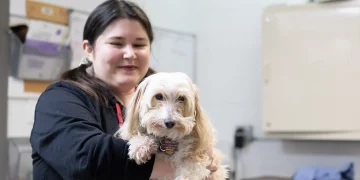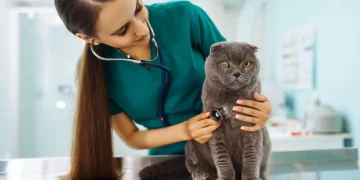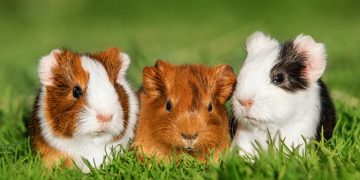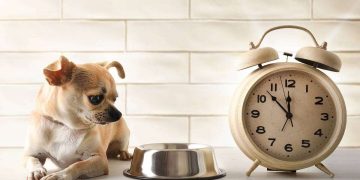Bad breath, also known as halitosis, is a common issue for both dogs and cats. While it’s easy to shrug off occasional foul odor from your pet’s mouth, persistent bad breath can sometimes be a sign of an underlying health problem. As a pet owner, understanding the causes of bad breath and knowing how to address it is crucial for maintaining your pet’s overall health and comfort.
In this article, we’ll explore whether bad breath is normal for pets, why it happens, and what you can do to solve it. We’ll also look into the common causes of pet halitosis, when it’s time to seek veterinary care, and some preventive measures you can take to keep your pet’s breath fresh and healthy.
Is Bad Breath in Pets Normal?
A certain level of bad breath can be considered normal in pets, particularly after meals or when they’ve been chewing on toys or bones. Just like humans, pets can have temporary odors in their mouths. However, persistent or foul-smelling breath is usually not normal and should be investigated.
Here are some general guidelines to help you understand when bad breath may be a normal occurrence versus a sign of an issue:
Normal Bad Breath
- After Eating: Pets may have temporary bad breath after eating, especially if the food is strong-smelling or contains certain ingredients that can cause an odor.
- Certain Breeds: Some breeds, particularly those with flat faces (brachycephalic breeds like Pugs and Bulldogs), are more likely to have foul-smelling breath due to their dental structure and higher susceptibility to periodontal problems.
- Chewing on Items: Pets, particularly dogs, may develop bad breath after chewing on certain toys, bones, or even trash. This can result in a temporary odor that should disappear after a short period.
Not Normal: Persistent Bad Breath
- Unpleasant, Consistent Odor: If your pet’s bad breath continues or worsens over time, it could indicate a health issue that needs attention.
- Strong Foul Odor: A very foul or rotten smell, especially if it smells like decay or feces, is typically a sign that something is wrong and requires veterinary intervention.
- Accompanying Symptoms: If the bad breath is accompanied by other symptoms such as loss of appetite, excessive drooling, red or swollen gums, or difficulty eating, it’s time to consult a vet.
What Causes Bad Breath in Pets?
Several factors contribute to bad breath in pets, ranging from poor oral hygiene to more serious underlying health conditions. Let’s break down the most common causes of halitosis in pets.
1. Poor Oral Hygiene and Dental Disease
The most common cause of bad breath in both dogs and cats is poor dental hygiene. Just like humans, pets can develop plaque and tartar on their teeth if their mouths aren’t cleaned regularly. Over time, this buildup can lead to gum disease (gingivitis), periodontal disease, and even tooth loss.
- Plaque and Tartar Buildup: If plaque is not removed, it hardens into tartar, which can irritate the gums, leading to an infection in the mouth and foul-smelling breath.
- Gingivitis and Periodontal Disease: These are common dental conditions in pets that can cause painful inflammation of the gums and deeper infections in the teeth and bones. The bacteria present in the mouth can produce a foul odor.
- Tooth Decay or Abscesses: If a tooth becomes decayed or infected, it can release a nasty odor. Abscesses in the gums, often caused by infected teeth, can also lead to smelly breath.
2. Digestive Issues and Stomach Problems
Sometimes bad breath in pets can be caused by digestive problems or issues in the stomach or intestines.
- Gastrointestinal Problems: Conditions like gastritis, acid reflux, or gastric ulcers can cause your pet’s breath to have an unpleasant, sour smell. This type of odor is often due to stomach acids or food being undigested properly.
- Food Intolerance or Allergies: Certain foods or ingredients may cause digestive upset or an odor to develop in the mouth. Cats and dogs with food sensitivities may experience discomfort, leading to smelly breath.
- Vomiting: If your pet is vomiting frequently or has a history of regurgitation, it can lead to bad breath due to stomach contents being present in the mouth.
3. Kidney Disease
Bad breath that has a metallic or urine-like smell could be a sign of kidney disease. When the kidneys are not functioning properly, waste products like urea build up in the blood, and this can result in bad breath that smells like ammonia or urine.
- Signs of Kidney Disease: Other symptoms include increased thirst, frequent urination, weight loss, and lethargy. If you notice these signs alongside foul-smelling breath, a visit to the vet is necessary.
4. Diabetes (Sweet or Fruity Breath)
If your pet’s breath smells unusually sweet or fruity, it could be a sign of diabetes, particularly if the diabetes is not well-managed. When a pet’s body can’t use glucose properly, it starts breaking down fat for energy, which produces ketones. These ketones can make the breath smell sweet or fruity.
- Signs of Diabetes: Increased thirst, frequent urination, weight loss, and lethargy are common signs of diabetes in pets. If you notice these symptoms, you should seek veterinary care.
5. Liver Disease (Musty Breath)
A musty or foul breath odor may indicate liver disease. The liver plays an important role in detoxifying the body, and if it becomes compromised, it can result in a buildup of toxins in the bloodstream, leading to bad breath.
- Signs of Liver Disease: Yellowing of the skin or eyes (jaundice), vomiting, loss of appetite, and increased drinking are some signs to watch for in conjunction with bad breath.
6. Foreign Objects or Oral Infections
If your pet has something stuck in their mouth, such as a piece of food or a small foreign object, it can cause an infection or an unpleasant odor. Pets, especially dogs, tend to chew on objects, and if these objects get stuck in their teeth or gums, they can cause infection, which can result in foul-smelling breath.
- Oral Infections: Bacterial infections in the mouth, such as those from a cut or wound in the gum, can lead to significant bad breath.
How to Solve the Problem of Bad Breath in Pets
The good news is that bad breath in pets can usually be managed or even prevented with the right care and attention. Here are some steps you can take to help resolve your pet’s bad breath.
1. Regular Brushing
Just like humans, pets benefit from regular brushing of their teeth. Daily or at least weekly brushing can help prevent plaque buildup, reduce the risk of gum disease, and keep your pet’s mouth fresh.
- Use Pet-Specific Toothpaste: Never use human toothpaste, as it contains ingredients that can be harmful to pets. Use a toothpaste designed specifically for pets and a toothbrush that fits comfortably in your pet’s mouth.
- Start Early: If you begin brushing your pet’s teeth at a young age, they are more likely to tolerate the process as they grow older.
2. Dental Chews and Toys
Providing dental chews or toys designed to clean teeth can help reduce plaque buildup and promote oral health. Many dental chews also have a pleasant taste that can help freshen your pet’s breath.
- Vet-Approved Products: Choose dental chews and toys that are recommended by veterinarians. These products are designed to be effective in cleaning your pet’s teeth while being safe to chew on.

3. Regular Vet Checkups
Routine veterinary exams are essential for detecting dental problems early. Your vet can clean your pet’s teeth professionally and check for signs of gum disease, infections, or other health problems that could be causing bad breath.
- Dental Cleanings: Some pets may require professional dental cleanings to remove tartar and plaque that have accumulated over time. This may require anesthesia for thorough cleaning, but it’s necessary for maintaining oral health.
4. Proper Diet and Hydration
A balanced, high-quality diet is important for your pet’s overall health and dental hygiene. Some pet foods are designed to reduce plaque buildup and promote healthy teeth. Additionally, ensure that your pet has access to fresh water at all times, as dehydration can contribute to bad breath.
- Avoid Giving Table Scraps: Table scraps or certain foods like garlic and onions can contribute to bad breath in pets. Stick to a well-balanced, pet-appropriate diet and avoid feeding them human food.
5. Treating Underlying Health Issues
If your pet’s bad breath is a result of an underlying health condition such as kidney disease, diabetes, or gastrointestinal issues, it’s important to address the root cause. Your veterinarian can diagnose the problem and recommend appropriate treatment, such as medication, dietary changes, or lifestyle modifications.
When to See a Vet
If your pet’s bad breath persists despite your efforts to manage it at home, or if it’s accompanied by other concerning symptoms such as vomiting, excessive drooling, difficulty eating, or lethargy, it’s time to seek veterinary care. Persistent bad breath could indicate a more serious health issue, such as gum disease, kidney disease, or diabetes, which requires professional treatment.
Conclusion
While occasional bad breath in pets is not unusual, persistent or foul-smelling breath is often a sign that something is wrong. Regular dental care, including brushing your pet’s teeth, providing dental chews, and visiting the vet for professional cleanings, can help maintain your pet’s oral hygiene and keep their breath fresh. However, if your pet’s bad breath is accompanied by other symptoms or if it doesn’t improve with regular care, it’s important to consult a veterinarian to rule out any underlying health issues.























































